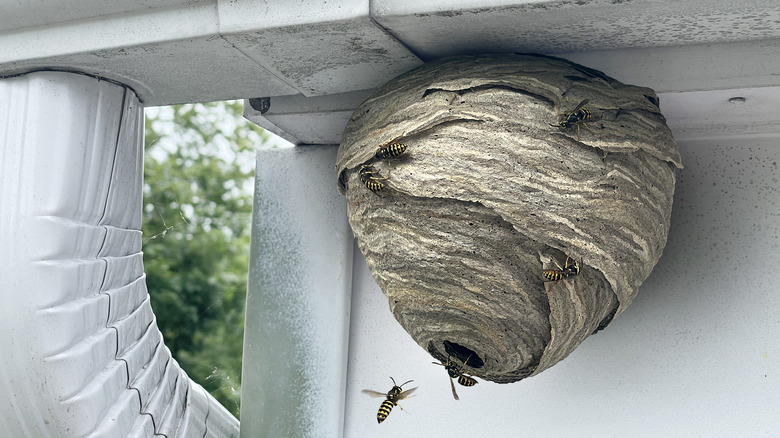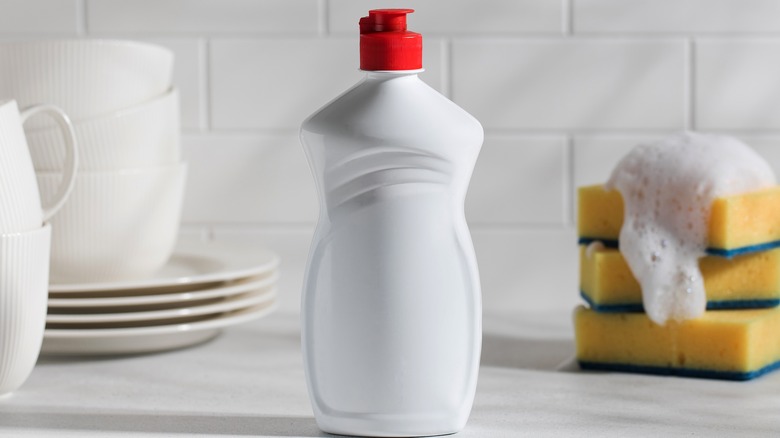The Addition To Boiling Water That'll Help Treat A Wasp Nest
No one likes to discover that a new wasp nest has materialized on their property. These angry pests bring nothing but trouble with them and pose a risk to anyone within a five-foot radius. They are fiercely territorial and will launch into an attack if you get too close to their nest. They can sting you repeatedly, causing your skin to swell up, hurt, and itch. Because of this, most people try to get rid of the nest as soon as they spot them. And while you can call in a professional to remove it for you, plenty of DIYs are available to perform the job yourself. However, some are more effective than others, and one of the best ones is to use boiling hot water mixed with soap.
While using boiling water to eradicate a wasp nest has been a time-honored remedy, adding soap makes it not only more effective but also safer. The soap coats the wasps inside, making them slower to fly out and sting. And even better, everyone has access to a kettle and soap at home, so it's a budget-friendly and convenient way to get rid of wasps the moment you see them. You don't have to run to the hardware store to get any supplies. Intrigued? Here's how to do it.
How to use water and soap to remove wasps
To safely remove a wasp's nest from your home, you will need hot water and dish soap. You will also need a spray bottle, hose-end sprayer, or bucket. The hot water and soap will destroy the nest and kill most if not all the wasps inside. Not only will the water scald them, but the soap will coat their bodies and wings, making them slower to fly out and sting you. This will make the process safer for you. Not only that, but the soap will also coat their spiracles, which are the pores wasps use to breathe, which will suffocate them. To create the mixture, mix about 2 tablespoons of dish soap with 1 liter of hot water. Pour it into the bucket or spray bottle, and mix it so it combines.
You should choose your tools depending on where the nest is located. If it's on the ground, opt to use a bucket. But if it's located in a tree, you don't want to be flinging boiling hot water into the air. Instead, use the spray bottle or hose-end sprayer. You never want to get too close to the nest, keeping a safe distance between you and any angry wasps that come out. You also want to wear protective clothing — or at least long pants and a long-sleeved shirt — to protect your skin from stings. It's also best to spray them early morning or evening, when activity is low.

